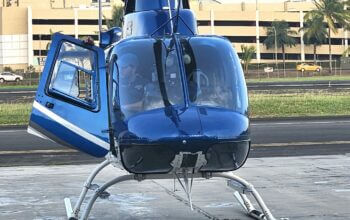Estimated reading time 3 minutes, 16 seconds.
The Government of Canada has reached another milestone in its commitment to improving the safety of Canada’s air transportation sector by modernizing and strengthening regulations.
The Minister of Transport, the Honourable Marc Garneau, announced changes to the Canadian Aviation Regulations to mandate the use of digital emergency locator transmitters (ELTs) onboard aircraft flying in Canada.
The new, strengthened requirements will:
- improve passenger safety by increasing the likelihood that the distress signals will be received;
- enhance the efficiency of search and rescue operations by providing rapid, reliable and accurate position information to search and rescue services;
- reduce false alarms and the unnecessary deployment of search and rescue resources;
- harmonize emergency locator transmitter requirements with international standards; and,
- respond to a recommendation from the Transportation Safety Board of Canada, which called for the installation of digital emergency locator transmitters on all Canadian-registered aircraft and foreign aircraft operating in Canada.
“Canada has one of the safest aviation systems in the world, and our Government remains dedicated to maintaining and improving aviation safety. The new requirement for digital emergency locator transmitters onboard aircraft flying in Canada will enhance the efficiency of search and rescue operations and improve passenger safety by increasing the likelihood that a distress signal will be received in a timely manner,” said Minister of Transport, the Honourable Marc Garneau.
Under the previous regulations, Canadian aircraft were required to be equipped with an analog ELT using the 121.5 MHz frequency. The regulatory changes announced today will require all Canadian aircraft to be equipped with a digital ELT capable of broadcasting simultaneously on frequencies of 406 MHz and 121.5 MHz, with some exceptions.
Using digital ELTs will reduce risk to human life and health as these devices provide more rapid, reliable and accurate position information to help search and rescue services identify and locate an aircraft in distress in a timely manner. Distress signals are received by a global satellite system that is monitored by search and rescue services, thereby increasing the chances of a successful rescue in the event of a downed aircraft.
The amendments apply to Canadian and foreign-registered aircraft operated in Canada, with the exception of gliders, balloons, airships, ultra-light aero planes and gyroplanes.
Commercial air operators, foreign aircraft and private operators have one year after the final publication of the amended regulations in Canada Gazette, Part II on Nov. 25, 2020, to implement the amendments while recreational operators have five years to comply.
An emergency locator transmitter (ELT) is a radio transmitting device activated following an aircraft accident. It is used as a distress beacon to initiate search and rescue operations to locate an aircraft in distress. Depending on the type of ELT installed, when broadcasting, the signal is emitted in either an analog (121.5 MHz) or digital (406 MHz) format. All commercially available 406 MHz ELTs also include an integrated 121.5 MHz transmitter to allow for an additional means of homing in on a downed aircraft.








